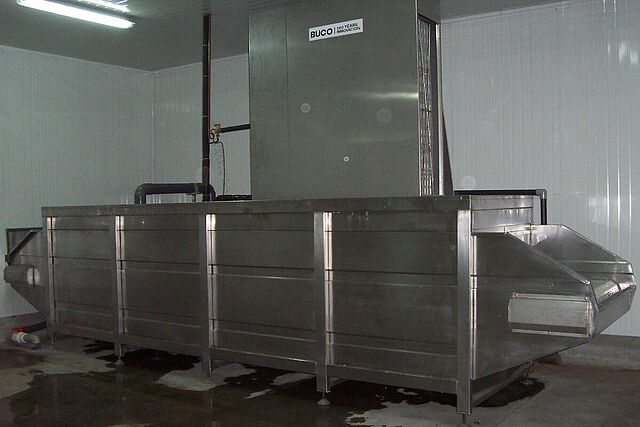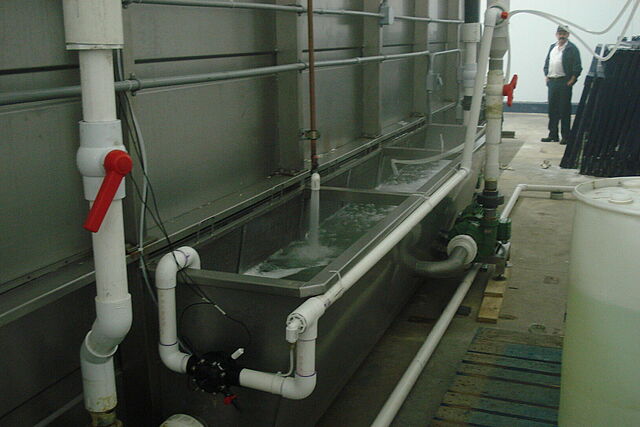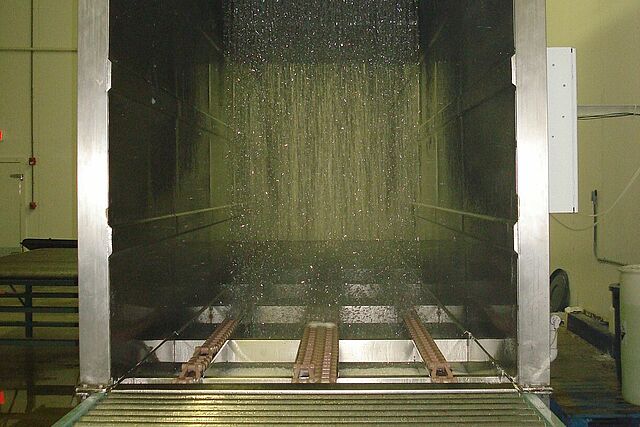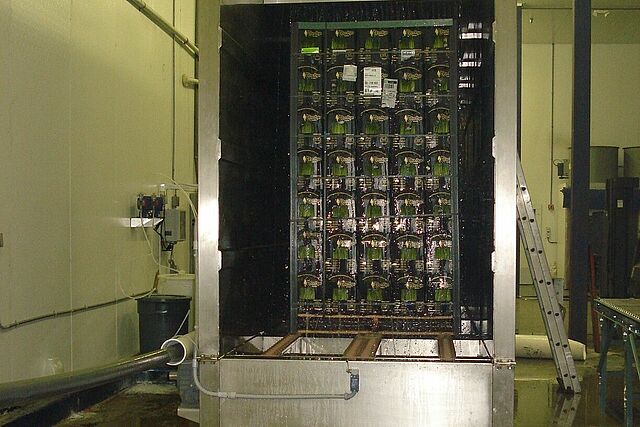
Hydrocooling heat transfer
Refrigeration AG offers exceptional cooling solutions for fruits and vegetables. Our range of customized equipment and engineering solutions provide tailored cooling options according to customer specifications, ensuring that your produce is kept fresh and cool for longer.
Our technical specifications include residence time, conveyor velocities, dimensions, and water demand. Our team of experts works with you to determine the best solution for your specific needs, from individual components to complete turnkey projects.
We understand that not every business has the same needs, and that's why we offer bespoke cooling solutions that are tailored to your unique requirements. Don't let your produce go to waste, contact us today to discuss your refrigeration needs and let us help you keep your products fresh and cool for longer!
Hydrocooling definition
When it comes to harvesting produce, it's important to remember that time is of the essence in ensuring optimal quality. Regardless of the cooling system used, one key factor to consider is getting the harvest to the pre-cooler as quickly as possible.
This helps to maintain the freshness and quality of the produce. One effective method for cooling produce is hydrocooling, which not only cools the produce to the desired temperature of 4.0°C or lower, but also cleans it and reduces fruit-rotting organisms using chlorine.
The result is a longer shelf-life and higher quality product for consumers. While vacuum cooling is the quickest method, it can result in high weight loss and reduced shelf-life due to the evaporation principle.
On the other hand, hydrocooling is a fast and effective cooling method for produce items that are slow to cool due to their large volume-to-surface area ratio, such as sweet corn, melons, and large tree fruit. It's important to note that conventional refrigeration systems are slow to cool, leading to greater weight loss the longer the produce takes to reach its required temperature. To maintain optimal quality and reduce waste, most fresh fruit and vegetables require total cooling immediately after harvest. This helps to preserve the flavour, texture and colour of the produce, making it more appealing to consumers.
Hydrocooling advantages
Hydrocooling
- cools produce rapidly (about 15 time faster than air)
- allows greater harvesting and marketing flexibility
- easily handles large amounts of produce
- is a very effective method and lends itself particularly to root crop and stone fruits. Cooling is quick, weight loss is negligible and not like weight loss of 3% with air or vacuum cooling.




Direct product chilling with heat transfer temperatures of 0.5°C till -0.5°C
Ice water with a temperature of 0.5°C is a highly effective cooling method for rapidly chilling products and is widely used in food and process cooling across the globe.
The reason that it is so popular is that unlike conventional freezing methods, ice water that is only slightly over 0°C avoids the risk of freezer burn and is ideal for direct product cooling in most applications. It is worth noting that some customers have expressed concern about potential moisture issues, but it is important to note that fruits, vegetables, fish and seafood are naturally resistant to rain and water.
In order to achieve optimal performance, the heat transfer calculation and economics of these heat exchangers must be taken into account. At the same time, it is necessary to calculate the exact quantities of water or ice required for direct product cooling. In cases where ice water is insufficient, it is essential to use -0.5°C chip ice, particularly in the meat and fish processing industries. This ensures that the product is cooled down quickly and effectively, without any loss of quality or flavour..
Hydrocooling principle
The hydrocooler is an indispensable tool in the agriculture industry to ensure the quality of produce. It works by submerging the produce in ice water or brine, maintaining the desired temperature.
The residence time of the produce in the water depends on various factors such as its kind, shape, and size, the type of packaging, and mean ice water temperature. As the heat from the produce transfers to the water, it increases the return water temperature.
This water is collected, filtered if necessary, recooled, and recycled. The hydrocooler water should be changed daily to maintain its effectiveness in prolonging the shelf life of the produce.
However, some operations base the cleaning timing on the amount of produce that has run through. In addition to maintaining the quality of produce, hydrocooling also helps to reduce water loss and prevent wilting. This is because the process reduces the temperature of the produce, slowing down respiration and thus reducing water loss. The result is crisp, fresh produce that lasts longer on the shelves.
Types of Hydrocoolers and products suitable for Hydrocoolers
There are different types of Hydrocoolers which differentiate themselves
1. in the way that ice water or brine comes in contact with the produce:
- Shower Hydrocoolers (produce is exposed to a shower of ice water or brine)
- Immersion Hydrocoolers (produce is immersed in ice water or brine inside an insulated vat)
2. in the method of moving or placing the produce:
- Continuous (warm produce is placed on one end of conveyor belt , and cooled produce is removed at the opposite end)
- Batch (warm produce is placed into the hydrocooler and remains stationary on site until the needed residence time is over, afterwards it is removed)
3. in the way that produce is packed:
- loose product
- boxed product (in cartons or bulk bins)
- palletized product (in cartons or bulk bins)
Every hydrocooler uses a determined combination of these three factors.
Hydrocooling is high suitable for processing following vegetables:
Asparagus, Artichoke, Corn, Broccoli, Cabbage, Carrots, Cherries, Kiwi, Leek, Melon, Nectarines, Peaches, Pears, Radish, Salad, etc.
Hydrocooling is also suitable for cooling other kind of produce like bottled products (food, medicine or chemistry), or food packed in foil.


